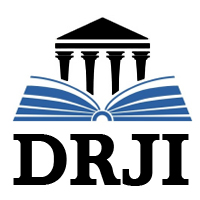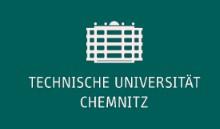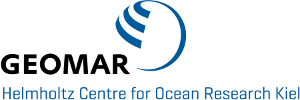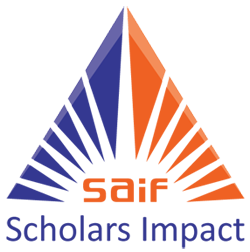About the Journal
Focus and Scope
The aim of the journal is to cover topical problem in the field of power and mechanical engineering.
The journal publishes:
- article outlining the new scientific results in the volume of not more than 15 typewritten pages, including illustrations (up to seven) and a tables;
- brief messages containing information about important results of the preliminary research up to 3-5 pages (these materials can be later used in the full article text);
- reviews of publications on actual problems of engineering mechanics from 20 to 25 pages on the request of the editorial Board.
Subjects of the journal:
- power engineering;
- aero and fluid dynamics in energy machines;
- heat transfer in engineering designs;
- dynamics and strength of machines;
- applied mathematics;
- alternative energy;
- high technologies in mechanical engineering;
- environmental aspects in mechanical engineering;
- material science in mechanical engineering;
- magnetism of technical objects.
The edition also accepted the paid advertisements on new materials, devices and equipment.
Peer Review Process
The rules of the review:
All articles are reviewed. Manuscripts submitted to the editorial staff after a preliminary review by editor to assess their conformity with the theme and requirements undergo single-blind review. At the same time, the names of reviewers are hidden from the authors.
double-blinded review. Neither the authors nor the reviewers do not know each other.
The rules of the review:
- After the editor's decision on the possibility of publication of the work in the journal, submitted manuscript is sent to at least two external experts in the relevant field.
- Chief editor informs the authors either the manuscript is adopted without revision or modification or the authors are given the opportunity to revise the manuscript and submit it again, or manuscript is rejected.
The review of the manuscript:
- The manuscript again received is logged when we get its hard copy by mail (date of registration).
- Chief editor or managing editor decides on the choice of the reviewers of the manuscript according to the topic.
- Materials manuscripts sent for review by the designated reviewers. The result of the review is the recommendations of reviewers.
- In case of a positive review the manuscript is transmitted to the editorial Board for its preparation for publication.
- In case of necessity of processing of the manuscript the review is sent to the author together with all remarks and wishes of the reviewers.
- In case of disagreement with the review the author sends a reasoned reply.
After the authors correct the manuscript according to the comments of the reviewer and editor its electronic version is passed to the editorial office again.
A revised version of the manuscript is sent for re-review.
Publication Frequency
Frequency: 4 issues per a year. Each issue is published at the end of every third month of the year.
Manuscripts are accepted continuously during the year. Approximate time between the submission of a manuscripts and its publication is about 6 months.
Open Access Policy
The journal is a publication of open access. All articles are free for viewing, reading, downloading and printing.
Materials are accepted in Russian, Ukrainian or English and are published in the source language.
Publication ethics
Reviewer ethics:
- The reviewer must objectively evaluate the quality of the manuscript, presented experimental and/or theoretical work, its interpretation and the presentation and consider the extent to which the work is of high scientific and literary standards.
- The reviewer must respect the intellectual independence of the authors.
- The reviewer shall apply with the manuscript sent for review, as a confidential document. He should not show the manuscript to other persons or to discuss it with other colleagues, except the reviewer is required to someone special consultation.
- The reviewer shall timely provide feedback.
Author ethics:
- Author (or author team) primary respond(s) for the novelty and reliability of the results of scientific research.
- The authors should provide reliable results of the research. False or fraudulent statements are unacceptable.
- Authors should ensure that the results of the research contained in the submitted manuscript are completely original. Borrowed fragments or approval shall be issued with the obligatory indication of the author and the source.
- Excessive borrowing and plagiarism in any form, including undocumented quotes, paraphrasing or assignment of rights of the results of foreign research are unethical and unacceptable.
- It is necessary to acknowledge the contribution of all people influenced the course of the study in one way or another. In particular, the article should be submitted links that have relevance for the research.
- All those who have made a significant contribution to the study should be listed as co-authors of the article.
- Authors should not submit the manuscript that was sent to another journal and is under consideration, as well as the article already published in another journal.
Editor ethics:
- The editors are responsible for the publication of works of authorship.
- During the decision about publishing is worked out the editor of the journal is guided by the reliability of data presentation and scientific significance of considered work.
- The editor should assess the intellectual contents of the manuscripts.
- According to the principles of confidentiality the unpublished data from submitted manuscripts should not be used for personal purposes or disclosed to third parties without the written consent of the author.
- Editor must not allow the publication of information, if there are sufficient grounds to believe that it is plagiarism.
Indexing
1. Index Copernicus (Poland) – International scientometric base (Index Copernicus Journals Master List). This website includes indexing, ranking and abstracting journals, and is a platform for scientific collaboration and joint research projects (page journal "Mechanical Engineering Problems" in ICJML).

2. WorldCat — the world's largest bibliographic database, with over 240 million records of all kinds of products for 470 languages. Base is created by joint efforts of more than 72 thousand libraries in 170 countries across the organization Online Computer Library Center. (Link)
3. ResearchBib - an international multi-disciplinary database of scholarly journals, including a description of the log more than 5,400 publishers. (link)
4. Genamics JournalSeek is the largest completely categorized database of freely available journal information available on the internet. The database presently contains 102516 titles. Journal information includes the description (aims and scope), journal abbreviation, journal homepage link, subject category and ISSN. Searching this information allows the rapid identification of potential journals to publish your research in, as well as allow you to find new journals of interest to your field (link)

5. Kubon & Sagner nowadays provide individual solutions for books, serials, periodicals, newspapers, and e-media, such as approval plans, selection support, new publication alerts and book search, as well as professional subscription services (link)

6. Central Scientific Research Library of Technische universitat chemnitz (link)

7. German National Library of Science and Technology University Library Hannover (link)
8. Bielefeld Academic Search Engine (BASE) - search engine (Germany), which is one of the most powerful suppliers of actual data on the scientific publications of European scientists. More detailed information on publications can be found here (link)

9. ROAD has been developed by the ISSN International Centre with the support of the Communication and Information Sector of UNESCO. The Communication and Information Sector (CI) of UNESCO was established in its present form in 1990. Its programmes are rooted in UNESCO’s Constitution, which requires the Organization to promote the “free flow of ideas by word and image (link)

10. IndianScience is a venture for development and growth of scientific knowledge and resources of science people. It is a platform for research and academic interaction and development in scientific fields. It is meant to bring the science research community and academician together and to provide information about various resources required for exploration of new ideas (research) and formulation of new concepts (academic) (link)

11. Journalindex - international multidisciplinary journal indexing system (link)

12. ESJI unites in its database the most important scientific journals in Europe and Asia, which publishes the most authoritative and relevant research. The ESJI provides indexing of major international journals and proceedings. Author can get information about international journal impact factor, proceedings (research papers) and information on upcoming events (link)


14. The GIGA Information Centre comprises four regional libraries (Africa, Asia, Latin America and the Middle East) as well as a trans-regional collection on comparative area studies, theory and methods (link)

15. The INTERNATIONAL SERVICES FOR IMPACT FACTOR AND INDEXING (ISIFI) provides quantitative and qualitative tool for ranking, evaluating and categorizing the journals for academic evaluation and excellence. This factor is used for evaluating the prestige of journals. The evaluation is carried out by considering the factors like peer review originality, scientific quality, technical editing quality, editorial quality and regularity (link)




18. JournalTOCs is a Current Awareness Service (CAS) where you can discover the newest papers coming directly from the publishers as soon as they have been published online. It is being used by large and small research centres and libraries worldwide. JournalTOCs is the biggest searchable collection of scholarly journal Tables of Contents (TOCs). It contains articles' metadata of TOCs for over 25,732 journals directly collected from over 2443 publishers (link)


Journal History
Since 1975 till 1994 the journal was published as interdepartmental collection of scientific works titled «Problems of mechanical engineering». 40 issues (two ones per year) were printed. Since 1998, the edition was transformed into the international scientific and technical journal «Journal of Mechanical Engineering».














